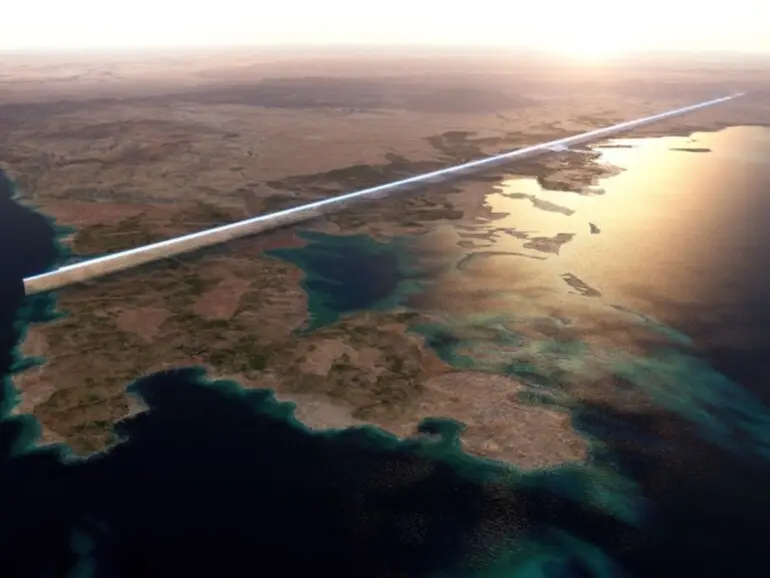We know all about cities because they’re basically built on the same model. When they’re small, they’re like villages of small farms, with residents living in houses that are smaller than their barns. If they’re near water, they can develop commerce, and import and export products. When their population increases and the city expands to fill the available space, the city grows vertically. The rich will live on high floors, with good views; the poor will live in their shadow. At some point, roads will be paved and horses will give way to cars. There will be congestion and pollution. People will complain, but no one will come up with a better way for people.
Until now.
Saudi Arabia’s current population is 32 million. It’s projected to reach about 50 million by 2030. Yes, it’s a large country — it occupies 830,000 square miles, and it’s the fifth-largest in Asia, the second-largest in the Arab world, and the largest in West Asia and the Middle East. It’s understandable that people don’t quite grasp that the existing infrastructure will reach full capacity by 2030. Something needs to happen on all that available land.
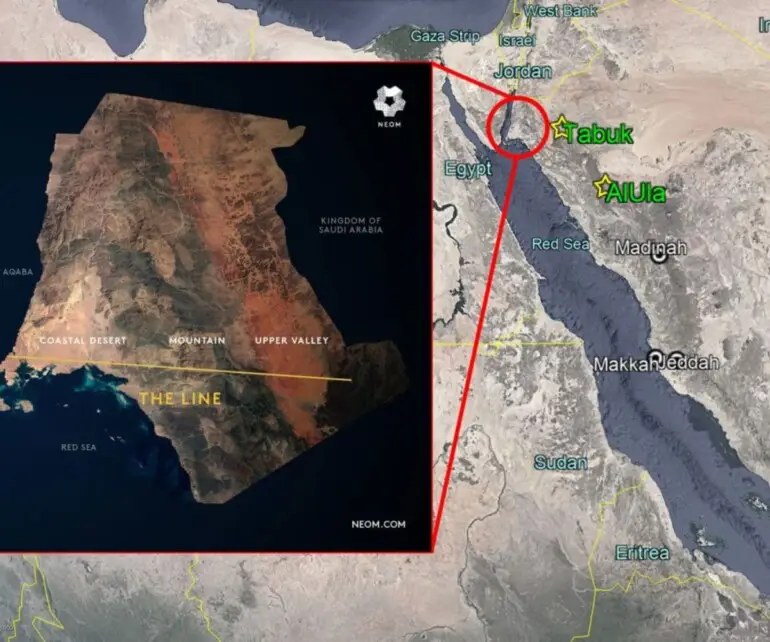
This project’s ambition is signaled by its name. The first three letters of NEOM come from the Ancient Greek prefix neo — meaning “new.” The “M” is from “Mustaqbal,” an Arabic word meaning “future.”
As the creators have observed, “We want to raise the capacity of Saudi Arabia, get more citizens and more people in Saudi Arabia. And since we are doing it from nothing, why should we copy normal cities?” That means innovation in every possible way. When was the last time you heard a real estate executive speak of a development as car-free and carbon-neutral, or describe this development in unequivocal superlatives, as “the most ambitious infrastructure project in history?”
In the West, “biggest” means an 85-story needle dominating the skyline. In Saudi Arabia, where NEOM’s first goal is “thinking differently about everything,” the project is, literally, a new city that will be 100% sustainable. It will rely on renewable energy. It will be walkable.
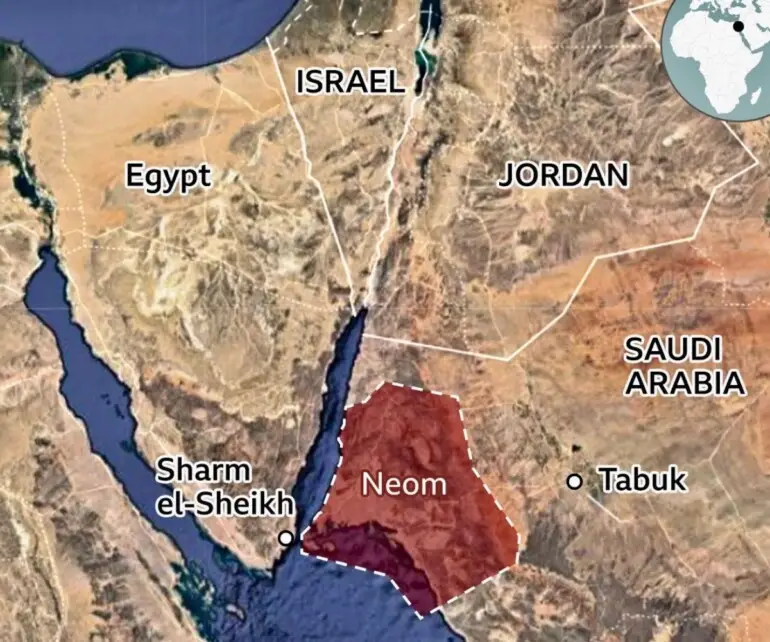
“The Line,” as it’s called, will stretch over 170 kilometers (110 miles) on the Red Sea Coast in the northwestern Saudi province of Tabuk. It will cover 10,230 square miles — as much land as the entire country of Belgium. Cost to Saudi Arabia’s Public Investment Fund: $500 billion. An epic investment? Yes, but this 16-borough city is a key element in Saudi Vision 2030. And that requires a considerable “wow” factor. The Line will comprise 140 modules, each 200 meters wide, 800 meters long and 500 meters high. Each module will house 80,000 people. And each of the first five modules will be designed by a different architecture studio.
Yes, the size is almost beyond imagining — but not for the visionary architects designing these modules.
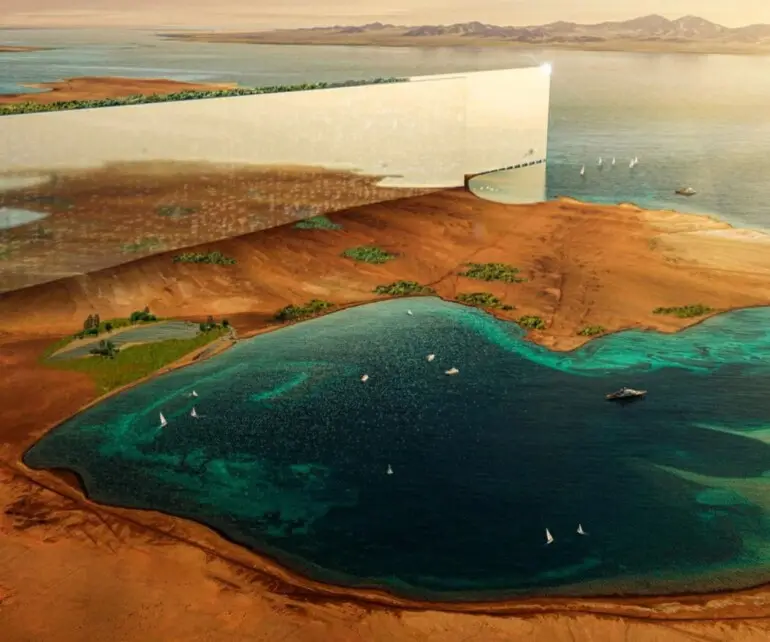
Peter Cook, founder of the Cook Haffner Architecture Platform, is 86 years old. His age matters, he contends. “It’s always assumed the young are more progressive. Now, I think the youngest architects are nervous. They’re very nervous. They’re not natural experimenters. Me, I came out of a funky period.
Thom Mayne, founding partner, Morphosis: “It’s actually a complicated project, but the big idea is incredibly simple. In our presentation, we showed a conceptual map that took New York apart. It was very important to us to develop the scale that broke down socially into communities that had personalities and gave people opportunities to live in very different environments like you would in London or Manhattan. I drive a Tesla, and I see that now that’s transitional. It’s the last car before there’s no cars.”
Wael Sleiman, architect at OMA: “Humans in general tend to go horizontal and avoid vertical by all means possible. Lifts and stairs and things like that are abrupt interruptions during movement. They hate it.”
The architects’ visions are personal, but there is universal agreement on the mission statement: the city must be in harmony with a quality urban living experience and the nature that surrounds it. So it is crucial that the Line will run on 100% renewable energy and 95% of the land will be preserved for nature — percentages that will be hard for any country to beat.
How can The Line achieve such criteria? By compacting the city between two 1,600-foot-high mirrored buildings that will be separated by a 660-foot outdoor space. “Urban sprawl” will definitely not be a factor here. Nor will pollution — a high-speed train that can travel from one end of the city to the other end in just 20 minutes should make no one nostalgic for a personal car. And eliminating expenses for car insurance and fuel will also give residents more disposable income.
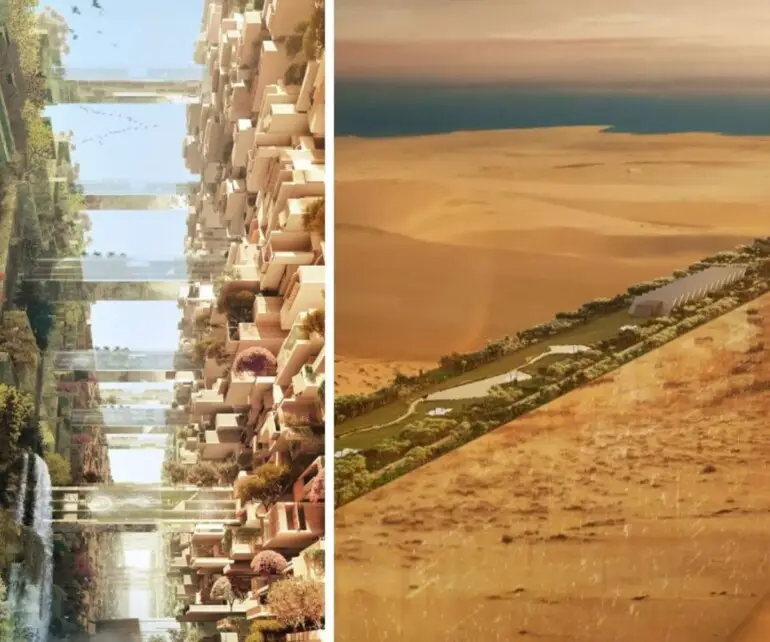
Crews broke ground for The Line in 2019. The founders hope it will be home to as many as 1.5 million people by 2030. By 2045, they dare to dream that 9 million will live there. Will it be as crowded as a European or American city? The creators don’t think so — this mega-city will be 33 times bigger than New York.
This new city will be powered solely by cutting-edge renewable energy sources. For the world’s second largest oil producer and largest exporter of oil to move away from its dependence on oil — that’s big news. But not, for those who are dazzled by projects that emerge in the desert like the monolith in “2001,” as big as the creation of The Line. As the legendary Peter Cook has said, “The Line is something that is intriguing to many people, puzzling to many people, and in some ways, puzzling even to those who are involved in designing it. And if it succeeds, it will be a new Babylon.”
